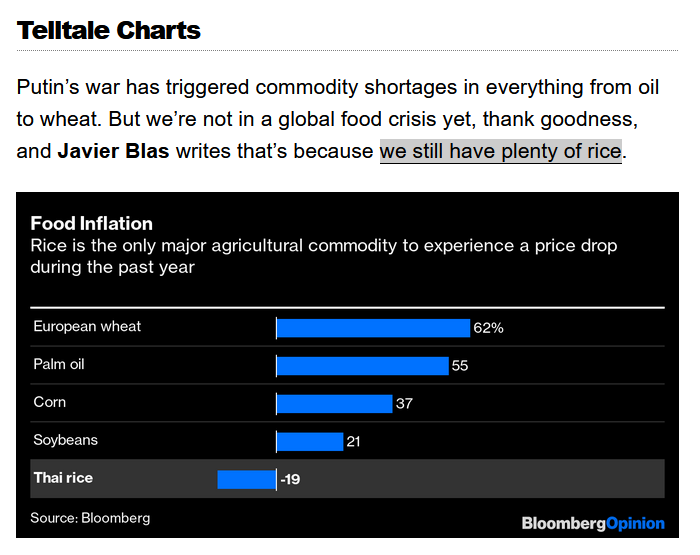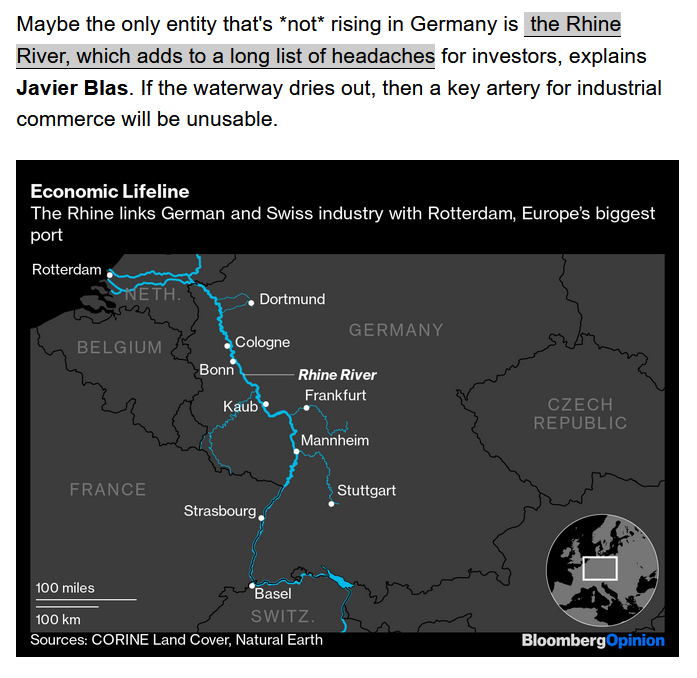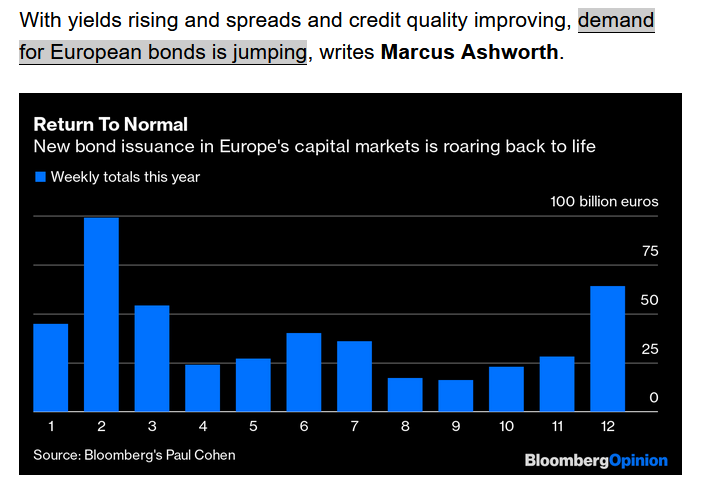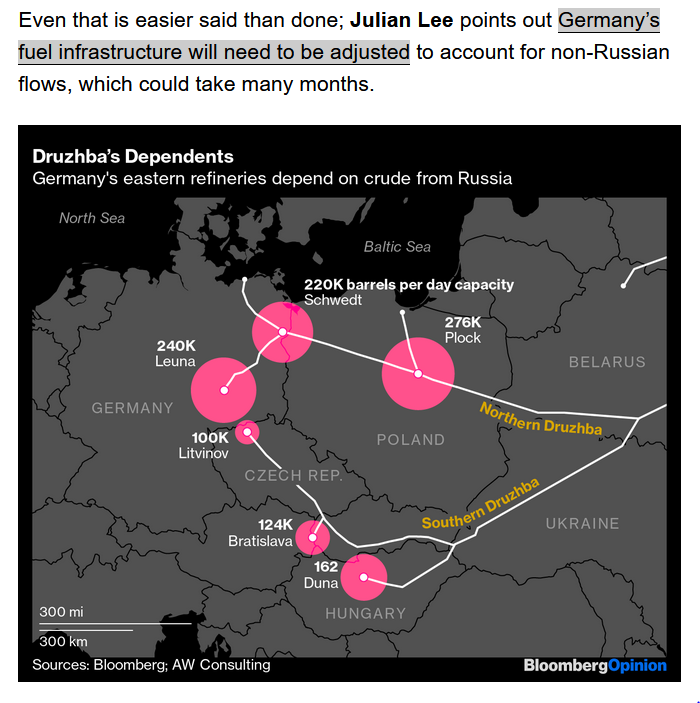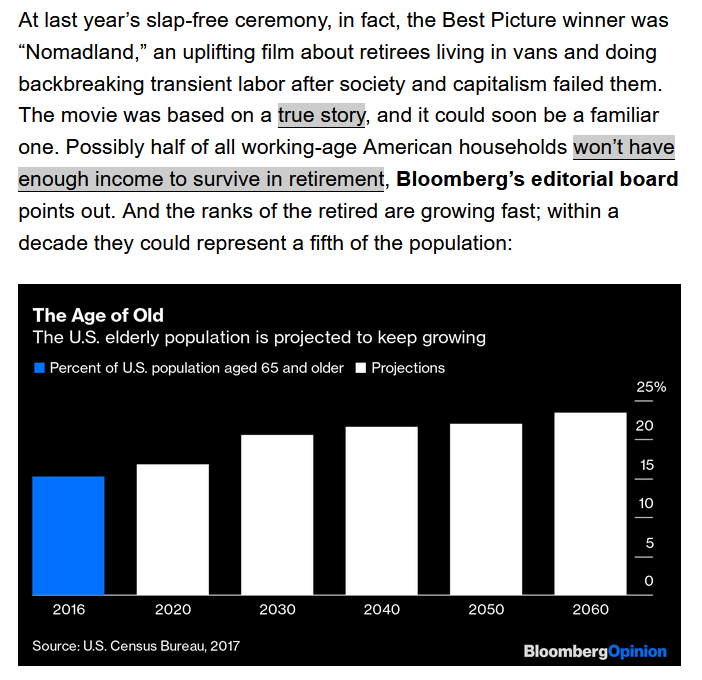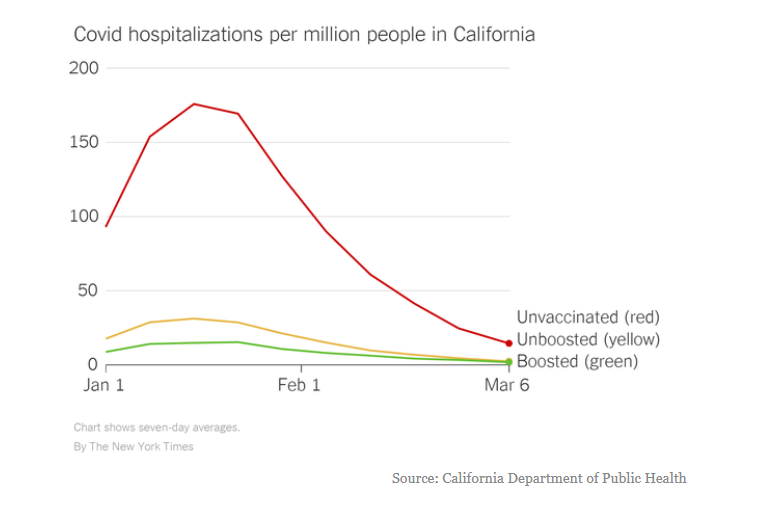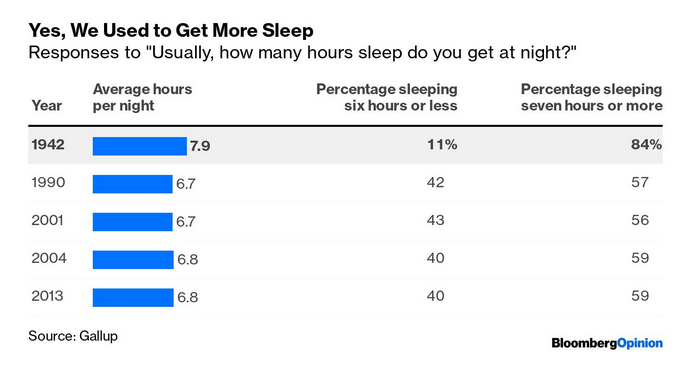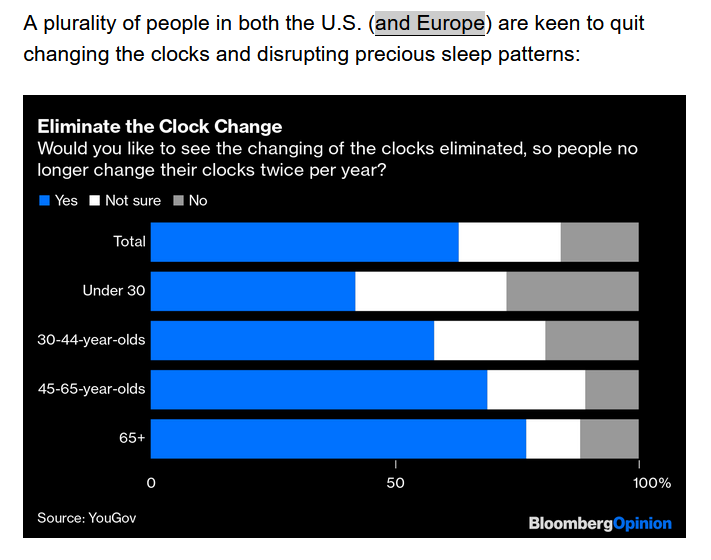|
You
can also view the message online
|
||||||||||||||||
 Châtenay-Malabry (FR - 92290), April 11, 2022 EFITA newsletter / 1034 - European Federation for Information Technology in Agriculture, Food and the Environment Do not miss the Virus Jokes in English and French The informatique-agricole.org site now offers you the possibility of subscribing the RSS feeds of its two newsletters See RSS feeds to implement to ensure that you continue to receive this newsletter To unsubscribe this newsletter, please contact me directely: guy.waksman(a)laposte.net if this link Unsubscribe does not work. Please note that I changed the presentation of the links that are embedded in the name of the web service. 
To correspond with me (GW), please use this address: guy.waksman(a)laposte.net To subscribe the efita newsletter (please ask your friends and colleagues to test this link) Efita Newsletters subscription Before computers Tracteur Latil, type TR, TRP, et TRPZ Weekly newsletters about ICT in Agriculture in English and French Both newsletters have around 14000 subscribers. >>> Last weekly EFITA Newsletters in English (created in 1999) Efita Newsletters >>> Last weekly AFIA Newsletters in French (created more than 20 years ago in 1997) Afia Newsletters >>> Statistics for the last efita newsletter >>> Last issue of the afia newsletter >>> Last available satistics for the afia newsletter European Soil Data Centre Newsletter No.140 (Apr. 2022) See esdac.jrc.ec.europa.eu La cueillette des pommes de Camille Pissaro FutureFarming.com > Field Trials podcast – Getting creative with drone use How can farmers increase the value of existing technology – and stay safe while using it? Is your drone paying for itself? Are you using it safely? Did you potentially bite off more than you could metaphorically chew: In Future Farming’s latest Field Trials podcast, Fiona Lake, a drone operation and training professional based inQueensland, Australia, discusses drone utility, the role creativity plays in making the technology pay, uses for other ag-tech tools, and much more besides. > Robotic Weeding: Verdant Robotics launches robotic weeding service Verdant Robotics launches a robotic weeding service to weed specialty crops like carrots with a multi-action three-point weeding robot that can spray and laser weeds. > Expert Opinion: Appreciating the foundation Communication technology underpins advances in production. I propose we all take a few seconds, set aside the flashy, perpetually “game changing” advances, and really appreciate what communication technology has done for us as ranchers, growers, and agricultural professionals. > Electric Tractors: Solectrac announces electric tractor dealer in U.S. Brim Tractor in Lynden, Washington, is the first certified Solectrac dealer on the West Coast and will offer Solectrac’s full line-up of electric tractors. Brim Tractor will offer the e25 compact electric tractor and the e70N, a powerful, narrow electric tractor purpose-built for vineyards and orchards. > Controlled Row Farming: Controlled Row Farming: Making a profit while promoting biodiversity German company Amazone is testing new technologies in Controlled Row Farming (CRF) to generate good yields and profits together with a maximum contribution to biodiversity. Both goals should be met but ideally also support each other. > Electric Tractors: Power to the battery, or not? This year certainly won’t be the first year in which electric tractors are introduced. 2022 will however be the first year in which the first factory-made electric farm tractors will be sold. And it’s not the obvious brands who are the pioneers! > Show us your application drones! Do you design, build or convert Agriculture Drones/UAVs for applying seed, sprays or fertiliser and want to show it to Future Farming’s global farming audience – for free? Future Farming is updating our unique Application Drone Catalogue for 2022. We want to know what you offer, how it works and any special innovations that sets it apart from the crowd? > Crop scanning: Adroit Robotics presents powerful scanning tool for orchards The Brazilian start-up has developed equipment with smart sensors to precisely scan fruit orchards and allow farmers to make better decisions. Called LeafSense, the monitoring technology can be mounted on agricultural machinery such as tractors to scan plants and fruits in real time. > Tools & Data: Jacobs and Intelinair deliver agronomic insights to farmers Multispectral imagery provided by Jacobs’ sensors is used by Intelinair to create timely agronomic insights that aid farmers in making real-time management decisions. > Tools & Data: Syngenta and Pairtree to provide on-farm sensory information With the support of a AUS $ 170,000 (US $ 127,000) funding from the Australian government, Syngenta and agtech company Pairtree will co-fund the completion of three commercial proof-of-concept trials to develop a data integration service. > Expert opinion: Appreciating the foundation Modern communication tools have allowed farmers, ranchers and other agricultural professionals to connect directly with those outside the sector. Working in Canadian agriculture for over a decade, I’ve seen this happen and evolve in real time to, I would argue, the benefit of anyone open to benefiting from it. > Field Trials podcast – Getting creative with drone use Is your drone paying for itself? Are you using it safely? Did you potentially bite off more than you could metaphorically chew? In Future Farming’s latest Field Trials podcast, Fiona Lake, a drone operation and training professional based in Queensland, Australia, discusses drone utility, the role creativity plays in making the technology pay, uses for other ag-tech tools, and much more besides. See futurefarming.com
Gevo, Farmers Edge Partner to Verify Sustainable Fuels from Low-Carbon Grain Farmers Edge innovative technology coupled with Gevo's Verity Tracking platform is expected to create value at the farm level. See precisionag.com Climatech Precision Robotics Company Announces $80 Million Cash Infusion Beewise, creator of first-in-class autonomous smart beehive, closes funding round led by Insight Partners. See precisionag.com Samsara Launches Integrated Solution with John Deere to Digitize Farming Operations Expands upon existing JDLink integration and delivers new features that provide greater visibility into support vehicles to optimize farming operations. See precisionag.com La gardeuse de chèvres de Camille Pissaro How could the war in Ukraine impact global food supplies? The war in Ukraine could have profound impacts on global food supplies, with far-reaching consequences for hunger and food security across the world. For example, Ukraine has been one of the world’s largest contributors to the World Food Programme, the UN agency that provides food aid to countries in crisis. The war has now reversed this flow: the WFP is instead working to provide food aid to Ukraine. But there is time to react and contain a larger crisis. In this article, we present the data we need to understand the scale of Ukraine’s contribution, and which countries are most reliant on Ukraine for their food supplies. Is Agriculture Ready for Autonomous Tractors? A new report raises considerations around ag's readiness for large-scale adoption of autonomous vehicles. See precisionag.com IntelliCulture Closes $1.36 Million Seed Round to Help Farmers Drive Efficiency in Operations Through Remote Management IntelliCulture has grown to serve growers across North America, ranging from small-town family operations to Fortune 500 wineries. See precisionag.com La lessive à Pontoise de Camille Pissaro Webinar From the virtual field to the real field, the role of data in precision farming Farmers have a wealth of data and monitoring systems to optimise their operations – but bringing those systems together and easily applying them to the real-world terrain is critical to maximising efficiency and productivity. Topcon’s Tim van der Leck explores how farmers can farm their way, but better, by utilising full-workflow guidance and data systems to accurately interpret the data they collect. See futurefarming.com The Four M’s of Precision Agriculture – Global Farmer Network®, by Craige Mackenzie, February 17, 2022 M&M’s may be the world’s most popular candy. Just about everybody enjoys eating these colorful candy-coated chocolates, according to surveys. I like M&M’s as much as anybody, but as a farmer who engages in precision agriculture, I spend more time thinking about M&M&M&M’s, though it’s easier to refer to them as the four M’s. The four M’s are: Measure, Monitor, Manage, and Mitigate. …/… See globalfarmernetwork.org Chipotle testing RFID to enhance traceability, in Meat+Poultry Newport Beach, Calif. - Chipotle Mexican Grill recently announced that it is testing radio-frequency identification (RFID) technology to improve traceability and inventory systems at its Chicago distribution center and approximately 200 restaurants in the greater Chicago area. The fast-casual restaurant chain said it is one of the first major restaurants to use RFID case labels to track ingredients from suppliers to restaurants. “RFID labels transform inventory management into an automatic, digital function that optimizes restaurant operations and gives our Restaurant Support Centers access to inventory data in real time,” said Scott Boatwright, chief restaurant officer. “This integrated technology is improving our employee experience in participating restaurants while also benefiting our supply partners.” Chipotle said it worked closely with Auburn University’s RFID lab to refine the pilot program, which is being tested on meat, dairy and avocados from five Chipotle suppliers. See meatpoultry.com La lessive de Camille Pissaro Perspective: Beware the organic pesticide bandwagon, by Tim Durham, Plant M.D., April 06, 2022 Rivalry drives us — that instinctive need to root for the hero, while heaping merciless shade at the villain. We join these “affinity camps” to get our competitive fix. Us vs. them. The New York Yankees vs. the Boston Red Sox, Marvel vs. DC, Apple vs. Microsoft. My team, comic brand, or ecosystem is superior to yours, because XYZ. How do we choose these undying loyalties? It could be social or geographic. And these allegiances are absolute; definitely no room for waffling or backing out. It’s like mob initiation — this is for life. And one other thing, absolutely no bandwagon joining — except, it seems, in agriculture. Witness organics. Despite little evidence of its supposed merits, devotees will steadfastly defend their “team.” It’s widely touted in marketing materials to be safer, healthier, and more wholesome than that horrid “chemical-obsessed ag”! In the purity sweepstakes, default assumptions make the brand. Why? Ask the fans. You’re nearly guaranteed to get the same answer: pesticide free (false), but if they’re used, they’re infinitely safer. They just have to be, because they’re naturally derived (usually, but not always). Here’s where the bandwagon takes insidious root. Organics gets dressed up in this pleasing aesthetic, but it’s an otherwise shallow factual façade. When the National Organic Standards were first released, the U.S. Department of Agriculture decided to farm out (bad pun) organic aspirants to the Organic Materials Review Institute (OMRI). OMRI then evaluates, approves/denies, and adds to the “master list” of green lit substances. .../... See agdaily.com Food inflation in 2021 (source Bloomberg Newsletter) Rhine: European economic lifeline (source Bloomberg Newsletter) German house prices inflation (source Bloomberg Newsletter)
Crop scientists must seize upon every new technology to future-proof food systems, April 4, 2022, by Joe Tohme, irector, crops for nutrition and health, at the Alliance of Bioversity International & the International Center for Tropical Agriculture Farming may be among the oldest professions in the world; but if it is to have any future, it will increasingly need to rely on new technological breakthroughs to cope with the existential threat of climate change. Around the world, rising temperatures are rapidly accelerating the sixth mass extinction, including the disappearance of staples that are critical to countries’ economies and food security. More than 70 wild relatives of the world’s most important crops, including maize, beans, and potato, are at risk of being wiped out forever. For those working to rescue crop biodiversity from its nadir and protect food systems from a future of extreme weather, the path forward is clear. Crop scientists must harness the new tools that are emerging, including those from other disciplines, in the race to safeguard global food security and stem the rising tide of extinctions. Faced with this dual challenge of preserving the world’s existing crops whilst developing hardier varieties to feed a warming world, crop scientists at facilities like the new Future Seeds gene bank in Colombia are increasingly making use of genomic sequencing, artificial intelligence (AI), and machine learning to future-proof our pool of agricultural resources. By doing so, crop scientists are levelling the playing field in the fight against biodiversity loss, climate change, and hunger – with a series of technological advances at the forefront. .../... See agfundernews.com La mère Gaspard de Camille Pissaro
In a World of Conflict, Farmers Collaborate to Grow More Food – Global Farmer Network® n a world of fierce competition, agriculture is very often about collaboration. Neighbors help neighbors. Co-ops join resources for mutual benefit. Commodity groups promote the good of their members. Farmers also reach across borders to solve problems, as we discovered in what might appear to many to be an unlikely partnership. Sudhanshu is a farmer in India and Patience is a farmer in Nigeria. A little more than two years ago, just before the pandemic, we met in Mexico at a meeting hosted by the Global Farmer Network. We don’t appear to share much in common: We live in different places, deal with different climates and soils, and use different technologies. As farmers, however, we’re animated by a spirit of cooperation. We look for reasons to come together rather than excuses to keep us apart. See globalfarmernetwork.org
Beyond the burps: 4 ways for cows to have a positive impact, GreenBiz, by Theresa Lieb, April 7, 2022 Can beef be sustainable? This article originally appeared as part of our Food Weekly newsletter. Subscribe to get sustainability food news in your inbox every Thursday. Raising livestock or growing their feed has been a key driver of nature loss worldwide, including the Amazon rainforest and the Great Plains in the United States. If we want to give the future of native ecosystems, and thus our life on this planet, a real shot, we need to address the root of the problem. Promoting a shift from meat-heavy to plant-rich diets is an essential step. A comprehensive study on sustainable diets that evaluated both nutritional needs and environmental limits concluded that people should only consume 0.03 pounds of red meat per day. In 2020, consumption in the U.S. was ten times as high. We have a long way to go. But there’s also another side to the story. One question I frequently get in response to promoting diet shifts is where I see efforts toward more sustainable meat production fitting in. That question is too complex to answer in one article because of the many dimensions that affect animal agriculture. But I want to share some approaches I’ve been paying attention to and start outlining areas where livestock can play a positive role. I’ll jump right into the fire and start with beef. Beef has a large carbon footprint and there’s a fascinating debate going on that explores to what extent emissions could be mitigated by more regenerative practices. I’ll get into those details in a separate issue. First, I want to kick off the discussion by looking into less talked about aspects of beef production. On a smaller scale, beef can offer valuable social and environmental solutions. Despite its climate impact, it’s important to consider these outcomes as the climate crisis isn’t the only challenge we are battling — biodiversity, soil health and economic opportunities for marginalized groups are also important. Let’s look at four examples of areas where cattle can have a positive impact. >>> 1. Targeted grazing against invasive plants and to prevent wildfires Cattle and other livestock such as goats and sheep have been successfully used to manage vegetation — for example, by grazing unwanted or invasive weeds in restoration areas and eating grasses and shrubs that would otherwise fuel wildfires. This practice is called targeted or prescribed grazing. Wild herbivores would do this job in healthy ecosystems, but humans have altered many environments to the extent that those natural balances don’t occur anymore. Managed herds are a pragmatic way of trying to regenerate what we’ve damaged while also producing food. But these are small-scale approaches. Overall, grazing has had the opposite effect on biodiversity and wildfires as ranches have taken over wild habitats. >>> 2. Helping Native American ranchers thrive For Native Americans, the past centuries have been characterized by land loss and forced relocation. Tribes have gone from stewarding expansive and fertile land to being forced to survive on marginal lands with far fewer resources. For many, raising cattle has been one of the few opportunities to produce food and income for their communities. Today, this means that a disproportionate percentage of Native Americans rely on ranching — 75 percent of Native American producers specialize in livestock production, compared to 53 percent of U.S. farms overall. Livestock can positively affect the environment and producing communities under certain conditions. But let’s not forget that meat has been major contributors to these problems. Based on this history, there’s an imperative to help Native American ranching businesses thrive economically and manage their environmental outcomes effectively. Of course, this doesn’t take away the larger need to return land and make up for the more systemic injustices underpinning Native ranching, especially as Native Americans are bound to bear disproportionate impacts of climate change. >>> 3. Empowering ranchers to protect grasslands from land conversion American grasslands such as the Great Plains provide a variety of vital ecosystem services. They offer habitat for birds and other wild animals, store carbon underground and regulate water cycles. But more grasslands are getting eaten up by agricultural and urban expansion. Ranchers can help prevent land conversion. When grasslands used for pasture generate profits, ranchers have fewer incentives to convert them for crop production or sell land to developers. It’s important to acknowledge that cows aren’t a one-on-one replacement for the wild animals that once inhabited these ecosystems. Many grazelands have been managed poorly, producing devastating environmental outcomes. Ideally, we’d find a way to protect and rewild grasslands instead of using them for cattle. But that’s not politically feasible at the moment. In the near term, working to improve grazing practices and protect ranches is a more pragmatic solution to preserving the grasslands we have left. We should simultaneously work to create stronger political momentum for taking more areas out of production to conserve and rewild them. >>> 4. Using livestock to regenerate soil health Unsustainable use of cropland and rangelands has led to severe topsoil degradation. Because of this, regenerating soil health has to be a priority to secure future food production. There are two types of pilot approaches that have produced encouraging results. One is the use of multi-paddock grazing where cattle get restricted to a small fenced area that moves around a ranch over time. The second is integrating livestock into crop rotations — for example, to eat cover crops that grew over the winter, lowering the need for synthetic fertilizer. .../... See greenbiz.com Vilsack: Conservation land not the answer to global food crisis, Politico, by Ximena Bustillo The ag secretary poured cold water on Republican and industry calls to pull land out of the Conservation Reserve Program and put it back into production, even as the conflict in Ukraine poses food security risks worldwide. “Quickly converting this land to crop production is clearly unfeasible, even if we were to overlook the negative consequences of increased erosion and reduced water quality, wildlife habitat reduction, and decreased carbon sequestration and storage,” Vilsack wrote in a letter to the National Grain and Feed Association obtained by MA. Quick recap of CRP: Under the conservation program, ag producers are paid a yearly rate to remove “environmentally sensitive” cropland from production for a decade or longer and take steps to improve the land’s health. They can receive higher payments by adopting certain climate-friendly practices that improve water quality, increase carbon sequestration or protect wildlife habitats (although, as POLITICO reported, the program has significant limitations). Landowners enrolled 5.3 million acres through CRP in 2021. .../... See politico.com La récolte des pommes de terre de Camille Pissaro European bond markets back to life (source Bloomberg Newsletter) Toxic pipelines (source Bloomberg Newsletter) Poor American retired people (source Bloomberg Newsletter) Covid vaccine success (NYT Newsletter) More Sleep! More Sleep! (source Bloomberg Newsletter) We will not eliminate clock change. It seems that itis too complex and risky (source Bloomberg Newsletter) A first thought for today Few things can help an individual more than to place responsibility on him, and to let him know that you trust him. Booker T. WASHINGTON, reformer, educator, and author (5 Apr 1856-1915) A second thought for today Perhaps travel cannot prevent bigotry, but by demonstrating that all peoples cry, laugh, eat, worry, and die, it can introduce the idea that if we try and understand each other, we may even become friends. Maya ANGELOU, poet (1928-2014) A third thought for today Mankind's true moral test, its fundamental test (which lies deeply buried from view), consists of its attitude towards those who are at its mercy: animals. And in this respect mankind has suffered a fundamental debacle, a debacle so fundamental that all others stem from it. Milan KUNDERA, novelist, playwright, and poet (1929 -) A fourth thought for today Kindness is always fashionable. Amelia BARR, novelist (1831-1919 Vasili Arkhipov, a Soviet naval officer, hero of progress While in command of a nuclear-armed submarine off the coast of Cuba, Arkhipov dissuaded his fellow officers from attacking an American aircraft carrier, likely preventing an all-out nuclear war. See humanprogress.org In 2000, tetanus killed over 170,000 newborn babies Thanks to a sustained vaccination campaign, the WHO recorded just 14,230 neonatal tetanus deaths in 2019, a 92% reduction. The courtly competition in Kyoto produced groundbreaking artistic innovations, including the world's first novel See humanprogress.org Perspective: We'll all pay for lawmakers politicizing pesticides / AGDAILY, by Amanda Zaluckyj, The Farmer’s Daughter USA .../... But the only thing this legislation would accomplish is make it harder and more expensive to grow food. That shouldn’t be a surprise either: Booker isn’t exactly the most farm-friendly senator in the world. He’s previously called U.S. agriculture “perverse.” And although he sits on the Senate Agriculture Committee, he has a really dim view of our food supply. Instead, politicians should leave the pesticide regulation to the U.S. Environmental Protection Agency. The agency follows standards set forth in the Federal Insecticide, Fungicide, and Rodenticide Act, which has been in place since 1947. It’s a scientific approach that allows us to know how to use pesticides effectively and safely. So we don’t need individual states — or zealous senators — changing the rules to ban the trendiest “toxic” pesticide. And don’t think it’s because I don’t care about the environment or protecting farm workers (after all, I grew up doing farm work). New York and New Jersey might think they’re protecting pollinators. Booker might imagine he’s saving children. But if these pesticides actually caused the harm activists claim they do, the EPA would have discovered that through its FIFRA reviews. Because that’s precisely the way FIFRA was designed to work. Instead legislators are trying to impose non-scientific bans on important tools used by farmers to grow our abundant and nutritious food supply. In a time when people are struggling to make ends meet, including at the grocery store, we don’t need politicians catering to activists. We need them to work on quashing inflation and opening up markets to reduce our rising input costs, not playing games with pesticides. See agdaily.com Farm of the Future: The Royal Agricultural Society of England’s vision on how farming can adapt to climate emergency challenges On 8th March 2022, The Royal Agricultural Society of England (RASE) launched the Farm of the Future: Journey to Net Zero, a report with strong insights on land and resource management; bioenergy and renewables; low emission vehicles and fuels; and agri-tech innovation. The report follows a COP261 policy brief, which was published by the Organisation in October 2021. The Farm of the Future report was commissioned by RASE2 to pull together the latest science and its on-farm application, show what farmers can realistically achieve, and to identify practical steps they can take to decarbonise the farming industry. Farmers and land managers have a key role to play in developing a more circular, resource efficient rural economy. Many farmers need help, advice, and support if they are to embrace transformational change, adopt new ideas and technologies, while make fundamental adjustments to the way that they farm. The report is practical in its guidance, highlighting the emissions reduction options available to farmers and growers, including improved resource management, renewable energy generation, use of low emission farm vehicles, replacement of fossil fuels and adoption of digital technologies. .../... Alongside the main report, the Royal Agricultural Society of England asked specialist authors to comment on decarbonisation journeys for key farm production sectors, such as cereals, dairy, horticulture, meat, fuels and vehicles (See hereafter – GW). See ueaa.info Farm of the Future: Journey to Net Zero Guidance on how UK farmers can contribute to rural decarbonisation by cutting on-farm emissions and… Decarbonising UK Agriculture – Farm Vehicles and Future Fuels A technical paper produced as part of our 2022 Farm of the Future report, written by by Jonathan… Decarbonising UK cereal production A technical paper produced as part of our 2022 Farm of the Future Report, written by Dr Nigel… Decarbonising UK Horticulture production A technical paper produced as part of our 2022 Farm of the Future report, written by Matthew… Decarbonising UK intensive meat production A technical paper produced as part of our 2022 Farm of the Future report, written by Professor Jude… Decarbonising UK Dairy Production A technical paper produced as part of our 2022 Farm of the Future report, written by John Allen… A Review of Anaerobic Digestion Plants on UK Farms Anaerobic Digestion Plants on UK Farms - Barriers, Benefits and Case Studies Re-Fuelling the Countryside Report 2014 The prospects for low carbon farm and rural transport fuels La récolte des pommes de terre à Pontoise de Camille Pissaro
The distribution of this efita newsletter is sponsored by vitisphere.com Please, contribute to the content of your efita newsletter, and advertise your events, new publications, new products and new project in this newsletter. Without your support, it will not survive! Contact: Guy WAKSMAN E-mail: guy.waksman(a)laposte.net To read this newsletter on our web site See Efita The archives of this newsletter See Efita About the EFITA mailing list You can use the efita moderated list (> 15000 subscribers) to announce any event / product / web site / joke (!) related to IT in agriculture, environment, food industry and rural areas. If you want to subscribe a friend, please fill in his form. If you do not wish to receive our messages, please fill in the following form... |











